By MARILYN TINNIN
Native Jacksonians Stephen and Melissa Johnston have been a couple ever since they met on a high school field trip to Washington, D.C. in the 1980’s. He was a student at Forest Hill High School, and she was a Jackson Academy student. Their romance survived college years at different universities—she at Alabama, and he, at Ole Miss—and when he graduated in 1993 they married and headed off to Charlotte where the technology industry was booming.
Seven years later they came home to rear their children and to help start a new company, SmartSynch, described to me as a “smart grid technology company.” Stephen was CEO twelve years later when he received a very large proposition to sell. He says modestly, “We just happened to be at the right place at the right time.”
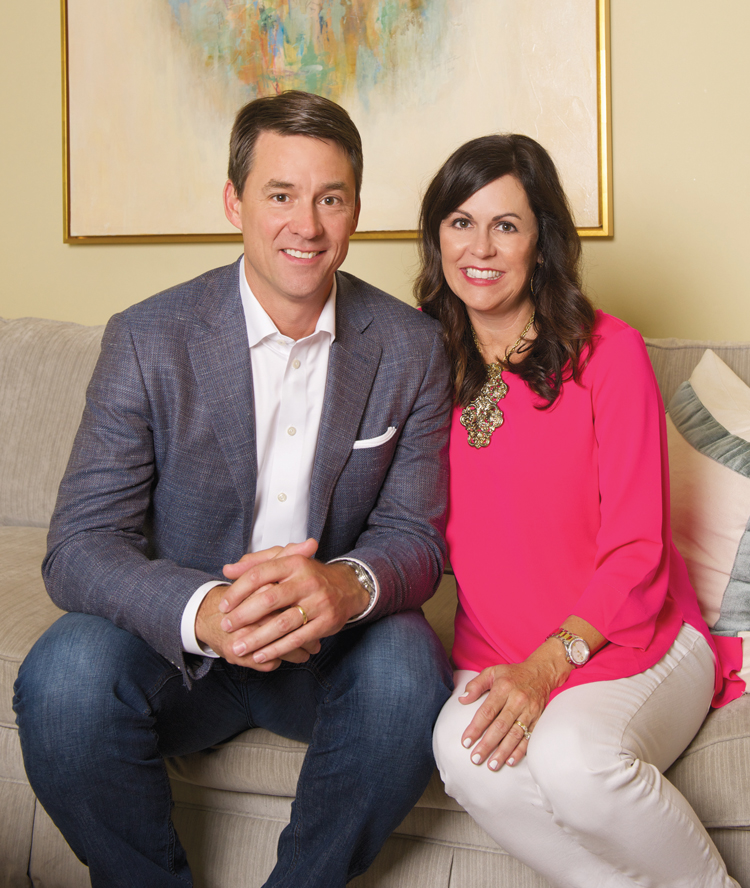 His contract with the buyer required that he continue to be involved with the company for two more years. During that time, he and Melissa gave frequent thought to what God might want their family to do next.
His contract with the buyer required that he continue to be involved with the company for two more years. During that time, he and Melissa gave frequent thought to what God might want their family to do next.
When Melissa read the book Same Kind of Different as Me in 2010, it had already been on The New York Times Best Seller list for more than a year. Deeply moved by the true story of the unlikely friendship between a homeless, illiterate African-American man and an affluent international art dealer and his extraordinary wife, Melissa handed the book to her husband and said, “You would really enjoy this book.”
Stephen immediately put it in the stack on his bedside table intending to get to it soon. It sat there for weeks. When Chip Henderson, his pastor at Pinelake referenced the book in his sermon a few weeks later, Stephen remembered Melissa’s recommendation. He picked up the book right away and says, “I was so moved by it, too. I read it quickly and immediately bought two copies to give away.”
He gave the first one to his father, but the other copy landed on his desk where it remained for a year. One morning in late 2012, as he and a co-worker, Darren Raybourn discussed a business matter in Stephen’s office, Darren pointed to the book asking, “What did you think about that book?” Despite the fact that a year had passed since he had read it, the story was fresh on Stephen’s mind. They spent about an hour discussing it. Darren had enjoyed the book as much as Stephen had.
It had layers of relevance and meaning. It was beyond entertaining—it was thought provoking and transformative, the kind of book, they agreed, that grabbed their hearts and stayed on their minds. Lessons in love, forgiveness, redemption, compassion, reconciliation, and purpose subtly emanate from every page. It’s raw, real, filled with humor and, at times, tear-jerking heartbreak. It is every bit the true gospel with a 21st Century backdrop.
And the God-Winks Kept Coming
By this time, a second book by the same authors had been released. It was aptly titled What Difference Do It Make? About a month later, Darren Raybourn tucked it under his arm as he boarded a plane bound for Denver, Colorado. He found his seat and opened the book only to be interrupted by the man in the seat next to him who began to quiz Darren about the book. Had he read the first one? How did he like it? Where did he find it? They had an open-ended conversation for the entire two and a half hour flight. The inquisitive stranger just happened to share a common name, Darren. He was Darren Moorman, a Hollywood film producer.
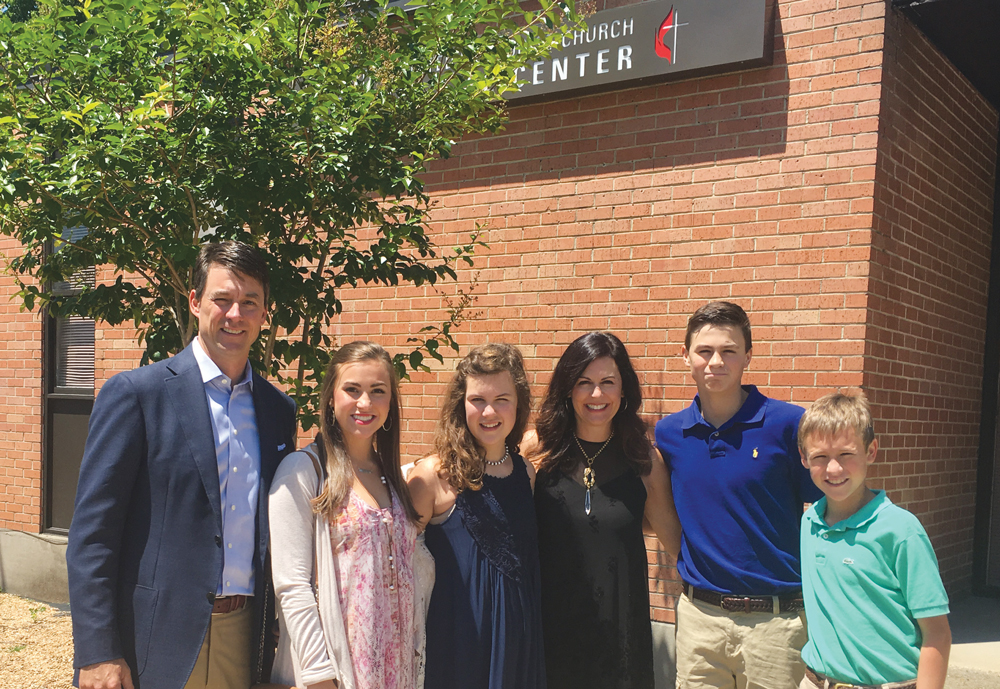
The Johnstons celebrate the newly renovated Central United Methodist’s Community Center. (L to R) Stephen, Mary Hunter, Isabelle, Melissa, Bennett, and Charlie.
Moorman offered that he and the author, Ron Hall, who is one of the principle characters in the story, were in the process of raising funds to produce an independent film telling the story on the big screen. Darren Raybourn suggested to Moorman that he might want to contact Stephen Johnston, his CEO who had just sold his company, was a big fan of the book and just might be interested in investing. Also, Darren mentioned that Stephen Johnston’s background included raising capital.
Moorman contacted Stephen and sent him a lot of materials about investing in film. Stephen studied them carefully, continuing to do his due diligence on researching the ins and outs of film investment. He was giving serious consideration to joining the project when he mentioned it to close friend David Landrum over breakfast one morning. David, also a big fan of the book, said that if Stephen determined it was a good investment, he would be interested as well.
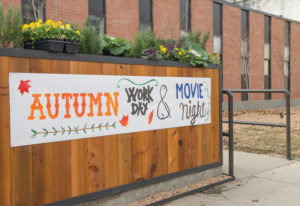
The banner was part of the movie’s story, but it was also the first step in the transformation of the community center and the Everybody Can Help Somebody Foundation’s project to totally transform the Center.
Several weeks and a few long telephone conversations later, including a three-hour conversation with Moorman and the two business partners who had aligned themselves with the potential project, Stephen reached a point where he simply did not think it was the right investment for him. It was Christmas Eve, 2013, when Stephen wished them all well, but he closed the door on any plans to become involved—or so he thought.
In April 2014, Moorman called asking if Stephen might reconsider. The film had reached an impasse. There was much disagreement over the creative license that the other partners wanted to take with the screenplay. Ron Hall wanted to tell the story as authentically as possible. He did not want fantasy or fiction. He did not want anything artificial in the name of “enhancing” a story that stood solid and beautiful on its own merits.
Although Moorman and Ron Hall were still determined to tell the story on the big screen, they were tired and discouraged and now trying to raise money to buy out the other two partners. Stephen politely said, “Hey, Melissa and I will pray for you, but we’re just not in a position where we can do what you are asking.”
Moorman’s reply was that he understood, but was just trying to exhaust every avenue and consider every spiritual angle closing with, “I know God is going to lead us to the right place and I am trying to uncover every spiritual rock.”
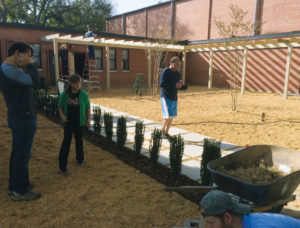 For the second time, Stephen closed the door thinking he was just being responsible and cautious and prudent. For the second time, God tapped Stephen on the shoulder! Just two days later, on April 17, Moorman texted Stephen and said that Ron Hall was going to be coming through Jackson that very weekend and wanted to meet him. Stephen told Moorman to give Ron his cell number. He was more than happy to meet Ron although he did not think he had been called to back a Hollywood film—even if it was quite faith-based. By the way, Stephen’s research had revealed that faith-based films aren’t usually moneymakers. It would be exciting, however, to meet Ron Hall in person.
For the second time, Stephen closed the door thinking he was just being responsible and cautious and prudent. For the second time, God tapped Stephen on the shoulder! Just two days later, on April 17, Moorman texted Stephen and said that Ron Hall was going to be coming through Jackson that very weekend and wanted to meet him. Stephen told Moorman to give Ron his cell number. He was more than happy to meet Ron although he did not think he had been called to back a Hollywood film—even if it was quite faith-based. By the way, Stephen’s research had revealed that faith-based films aren’t usually moneymakers. It would be exciting, however, to meet Ron Hall in person.
Three hours later, his friend David Landrum texted him that he and his wife, Jill, just happened to be spending the weekend at a bed and breakfast in Natchez and he had just had the craziest experience at dinner. The couple with whom they had shared a table was none other than Ron Hall and his wife—THE Ron Hall who mentioned that he was on his way to Jackson to meet Stephen Johnston.
Ron recounts that serendipitous meeting in the soon-to-be-released new edition of the original, Same Kind of Different as Me. Set for publication in conjunction with the film, the book includes an addendum after the final chapter recounting the unusual series of coincidences and the improbable collective of talent and regular folks who were integral in bringing his story to life and making it all happen in Mississippi. (The book will be released by Harper Collins in early October. Look for it then!)
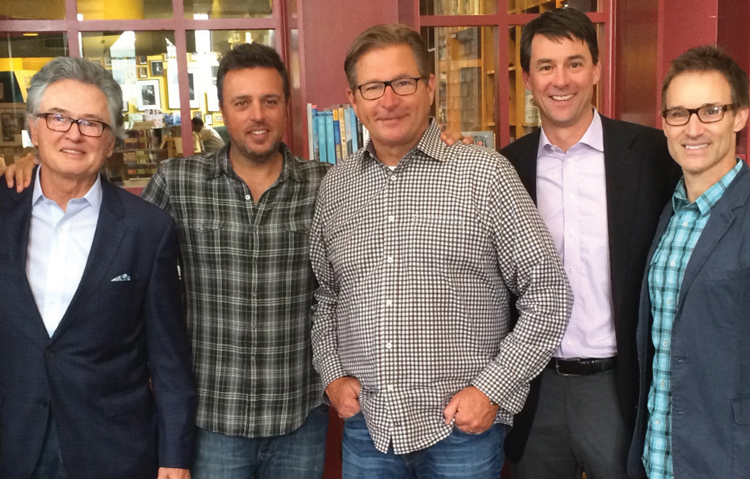
Ron Hall (producer and author), Michael Carney (director), David Landrum (large to the story), Stephen Johnston (producer), and Darren Moorman (Producer)
By the time Stephen Johnston met with Ron Hall, Moorman, and Director Michael Carney at Broad Street, it was May 1, 2014, the very day he completed all the terms of his buyout contract for his business. He was free to pursue the next chapter of his own life. By now, he had done enough praying, soul-searching and talking to Melissa, to know that God—for whatever reason—wanted him to get behind this movie. His only stipulation was that the movie be filmed in Mississippi because he did not intend to leave his family for several months. This was a little like Abraham heading out into the desert simply because God told him to go. He was aware that this was beyond his usual comfort zone, but he was just as certain God was in this. He decided that was enough.
Ron Hall’s entire life over the past three years had been consumed with chasing after the dream of the movie. Time and again he had come to a dead end. Every great disappointment along the way taught him valuable lessons as each one inflicted a heap of pain, but his determination never wavered. Neither did his certainty that this was God’s story and He would work it out His way and in His time. But like most of us, he was hoping God might step it up just a little.
The chance meeting with David and Jill Landrum followed by the meeting with Stephen Johnston started the wheels turning with a speed and energy that had been absent until then. The doors that Ron had tried in vain to open in his own strength were now opening one after the other in Mississippi.
And Stephen Johnson, who had been slamming doors as hard as Ron was trying to pry them open, found himself part producer in a Hollywood movie. Who but God could have arranged this adventure?
Falling Into Place
David Landrum arranged a meeting with the Mississippi Film Commission and Governor Bryant. Stephen went to work making phone calls and raising funds. Within three months, he had secured commitments for almost ten million dollars.
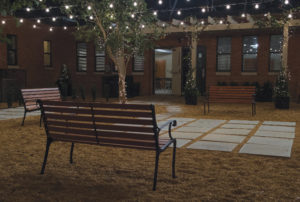 Producer Darren Moorman had shared the script with a producer friend of his who had a relationship with Paramount Pictures. The friend worked with producer Mary Parent who had numerous award winners under her belt. She read the script, absolutely loved it, and invited Ron and Stephen out to Hollywood to visit with her. She felt that the film was worthy of the best talent Hollywood could offer. Having Mary involved took the movie a notch higher because she had connections with the top stars in the industry.
Producer Darren Moorman had shared the script with a producer friend of his who had a relationship with Paramount Pictures. The friend worked with producer Mary Parent who had numerous award winners under her belt. She read the script, absolutely loved it, and invited Ron and Stephen out to Hollywood to visit with her. She felt that the film was worthy of the best talent Hollywood could offer. Having Mary involved took the movie a notch higher because she had connections with the top stars in the industry.
Filming would begin on October 27, 2014. By now, it was August, and they had no actors. Over the next few weeks, Djimon Hounsou (Blood Diamond, Gladiator) signed on to play the part of Denver Moore. Jon Voight (too many hits to list!) came on board to play Ron Hall’s racist, hard-drinking, very difficult father, Earl. Greg Kinnear (As Good as It Gets, Heaven is for Real) took the role of Ron Hall, and five weeks before filming was to begin, the female lead had not been cast.
The movie crew rolled into town and set up shop at the soundstage and studios in Canton. Up to this point, everything that had to align seemed to miraculously come together, but as Ron Hall says, “We were all on our knees praying that Renee Zellweger would give us a thumbs up.”
And she did.
The cinematographer, also a Mary Parent connection, was Don Burgess. He had filmed Forrest Gump, 42, and Spider Man. He brought his crew to Mississippi to make this movie.
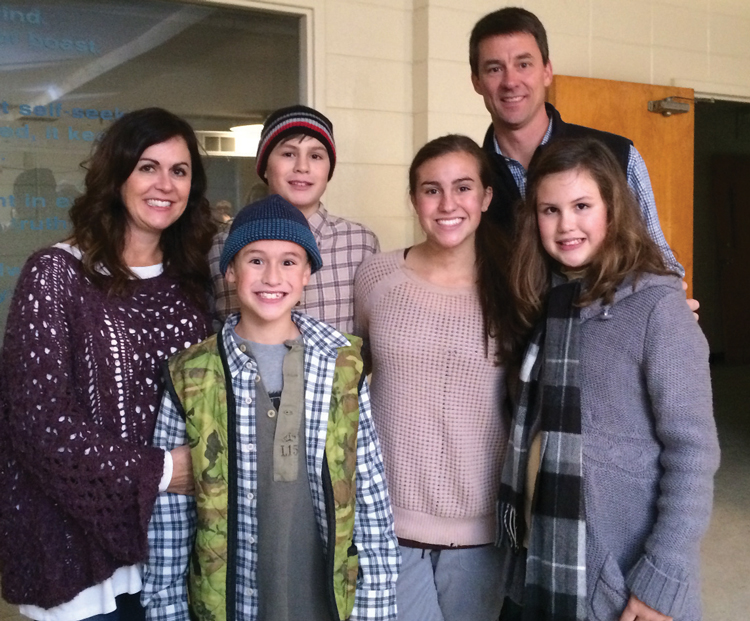
The Johnston children were encouraged to try for “extras” in the film. There was a need for an assortment of ages in the mission scenes. Mary Hunter, the oldest, made the cut and even has her name in the credits.
From October 27 to December 14, Stephen was on the fast track to learning how to make a movie. Melissa, in between full-time mom to four busy children, played the role of hospitality chairman, tour guide, and resident concierge who was able to connect cast and crew with whatever service they needed. It was truly an experience rich with new and unexpected friendships—and a new and growing passion for giving and service.
“Every day we are reminded only God could have made things happen the way they happened,” Melissa says. “If He had told us ahead of time, this is what you do, we likely would never have believed it, and we might not have even tried. It’s like we had on blinders. One thing led to another. He opened the doors. We just walked through them.”
Stephen and Melissa eagerly await the premiere on February 3, 2017. Like Ron Hall, they believe this film has the power to profoundly affect our culture, to transform hearts, and to become a movement of God. It is truly His story from start to finish.
Everybody Can Help Somebody Foundation
Scouting locations was another series of “coincidences.”
Much of the story takes place in the Fort Worth Union Gospel Mission where Deborah Hall befriended the community of homeless. The Central United Methodist Church Community Center at 507 North Farish Street fit the description perfectly. The neighborhood had been a proud hub of social and economic activity for African Americans prior to the 1960s.
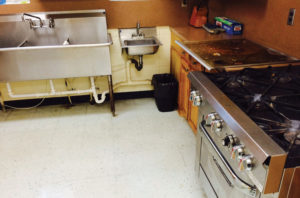
An outdated kitchen that tried hard to minister to the neighborhood that had changed hugely since its original inception.
A congregation established 150 years ago, the church has struggled in recent years as the neighborhood deteriorated, the economy saw the end of many small local businesses, and the institution of strong families seemed to die as well. A strong core of leadership has retained a great affection for the community and a great desire to provide broad social services to those in need. Central was still providing clothes and sandwiches on a daily basis for the homeless, but the community center itself needed repairs the church could not afford.
Stephen calls it a “huge ask” to say, “Hey, can we use your community center to film a movie and basically take it over while we do it?” However, part of Ron Hall’s passion in making this movie was to raise awareness of the needs of the disenfranchised in our cities. He wanted to assure the leaders at Central United Methodist that the Hollywood crew would leave their place better than they found it. They committed to putting in a new state-of-the-art kitchen at the community center when the filming was over. It would be the first project of the Everybody Can Help Somebody Foundation. The pastor and the elders were more than a bit suspect, in the beginning, having been promised many things over the years that had never materialized. Finally, on the day before filming was to begin, they agreed to take a chance that this time would be different.
Of course, starting a foundation meant raising more money. Stephen and Melissa did have a few fleeting thoughts of, “What if everybody goes back to Hollywood and we are left to figure this out?” God took care of most of that, too.
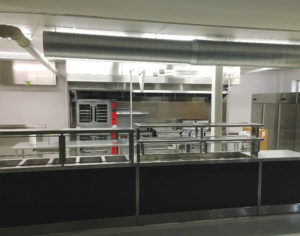
The state-of-the-art kitchen is a far cry from the kitchen that existed before the transformation.
One of the last scenes in the movie is Deborah Hall’s memorial service filmed at St. Peter’s Catholic Church in downtown Jackson. One of Deborah’s longtime friends from Dallas had flown into Jackson to be part of that scene. She had seen the transformation of the original Fort Worth Union Gospel Mission that happened when money poured in as a tribute to Deborah after her death. She was curious about the “look-alike” movie location and asked Ron if he would show it to her.
After a tour of the Central United Methodist Church Community Center, Ron told her of the plans to remodel the outdated kitchen. “How much is that going to cost?” Ron pulled a number out of the air, “Probably about $150,000.” She responded with “Well, okay. I’ll do that,” and she promptly took out her checkbook and handed Ron a check for $150,000.”
Reverend David McCoy, Central’s present pastor, has wasted no time, in ramping up a holistic program of outreach in the community. With the assistance of Mike Cashion of the Mississippi Hospitality & Restaurant Association, Reverend McCoy and the leaders of Central United Methodist have begun a “Kids in the Kitchen” project training and guiding young people on the skills they need to work in the restaurant industry.
As Reverend McCoy says, “We want to guide them and teach them how to succeed in an entry-level job. It is a way to give hope to those upcoming, to instill self-respect and the sense of accomplishment that comes from working.”
Reverend McCoy’s vision for the community center includes bringing in the people in the neighborhood and through relationships and authentic love teaching them to become givers themselves. He is not big on “handouts,” but large on “hand ups.” As one who spent his formative years in the housing projects of Philadelphia, Pennsylvania, he knows the challenges and has great compassion for the poor.